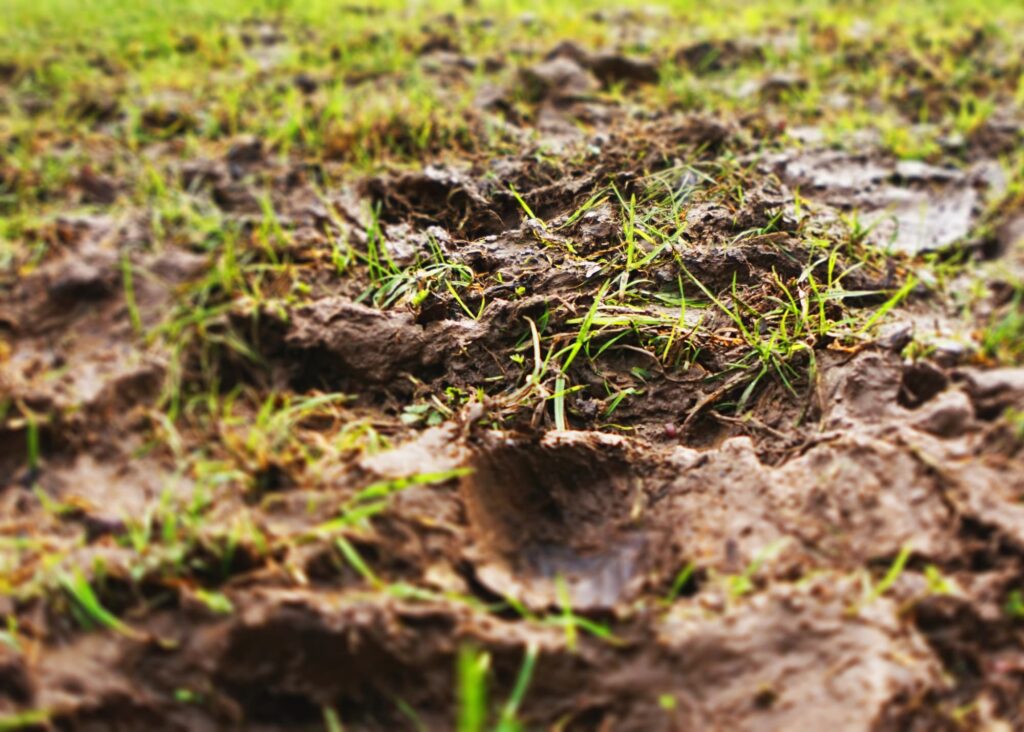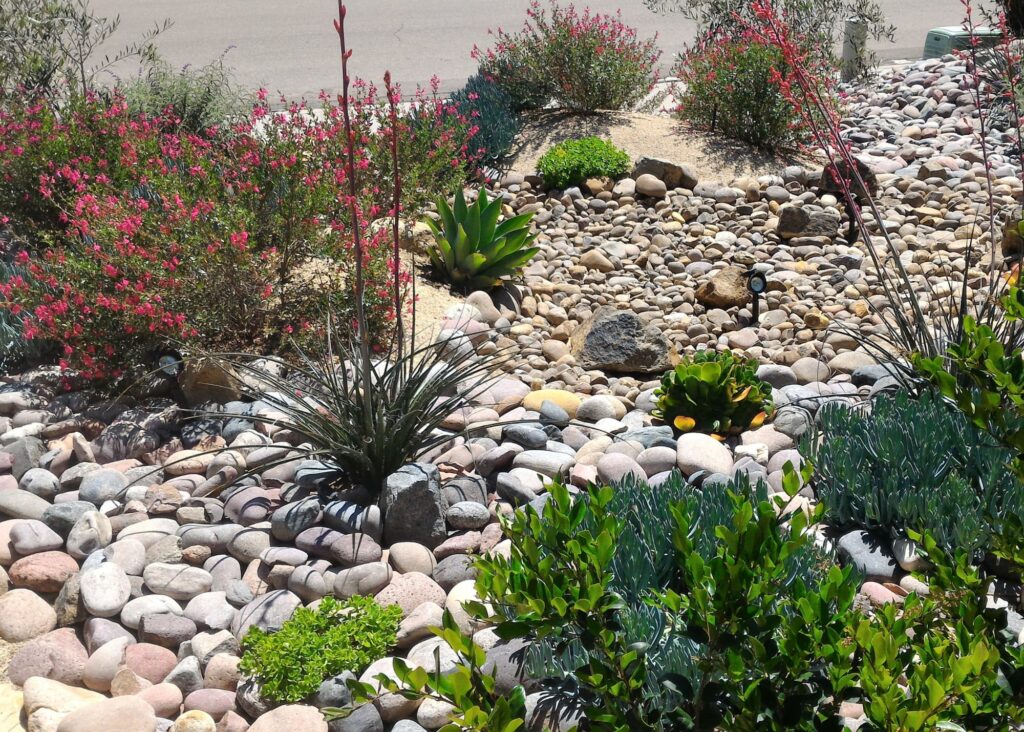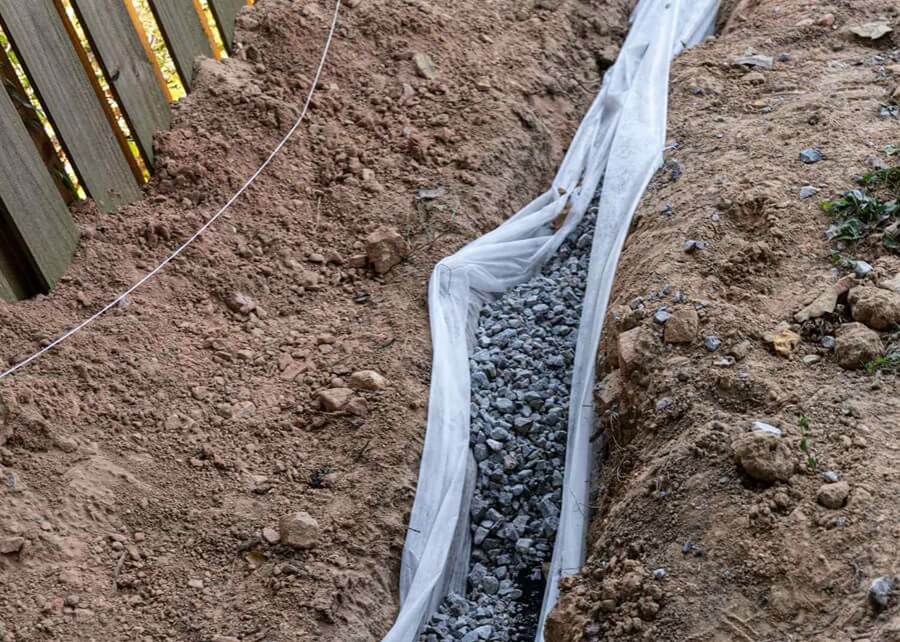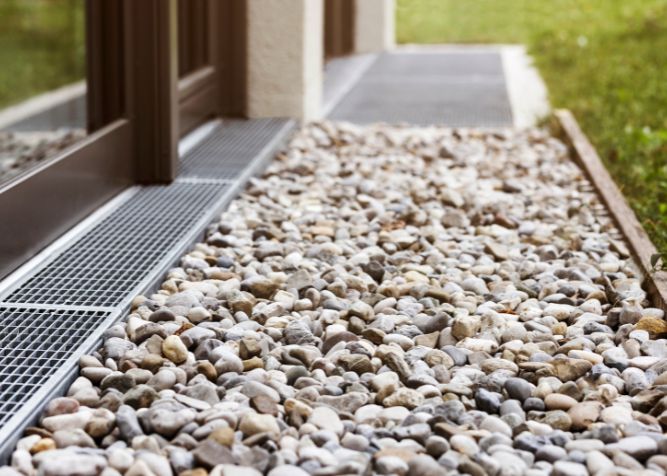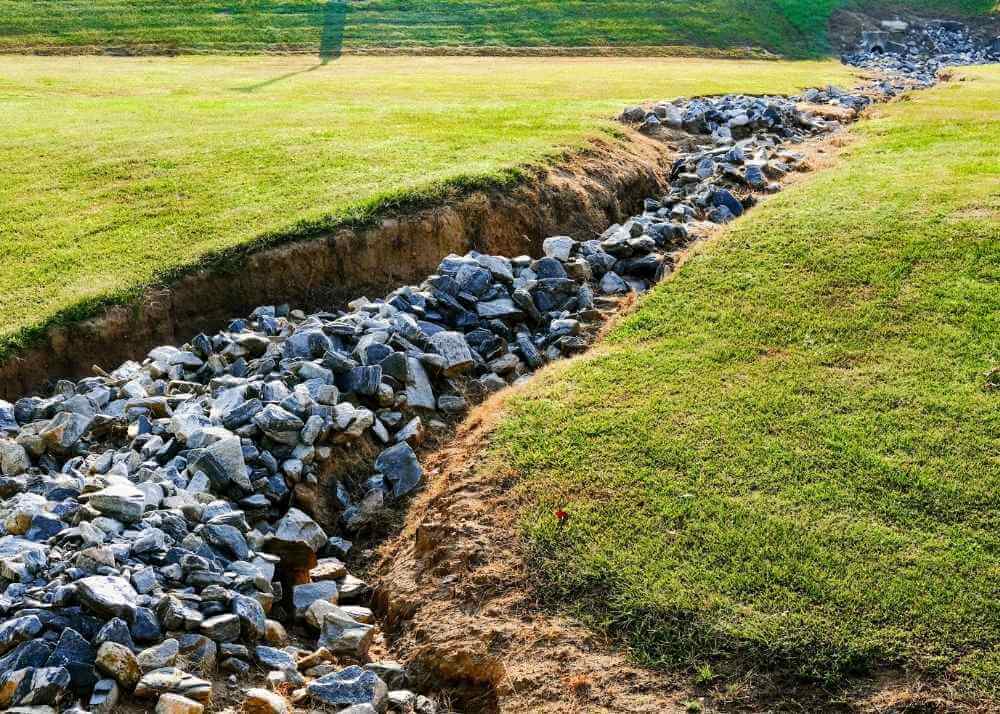An oversaturated or flooded yard can become a costly headache for homeowners. Beyond the aesthetic challenges, poor drainage in your yard can cause significant damage to your property.
How to fix drainage issues in your yard can seem like a question without a workable solution. However, there are DIY steps you can take to protect your property, and expert professionals who can help.
If you’re in the greater Chicago area, and wondering how to improve drainage in your yard, the solutions aren’t out of reach! The yard drainage specialists of Ware Landscaping can provide customized drainage solutions for your yard and help to keep your property looking great.
All you need to know about yard drainage
Poor drainage in your yard can arise from a multitude of issues. You may not even notice the results of poor yard drainage until a summer storm or winter snow arrives. Perhaps you have a yard drainage system installed, but it doesn’t seem to work for your property, or, you haven’t inspected the yard drains since you purchased your home.
Your yard drainage issues might be rectified with a simple solution such as sod installation or proper grading. A consultation with an expert team of drainage specialists may be able to provide the answers you need.
If your property is experiencing any of the following issues, you need new drainage solutions for your yard:
- Clogged gutters or downspouts
- Cracks in your foundation
- Debris in your yard
- Flooded basements
- Flooded yard
- Mildew
- Mold
- Oversaturation
- Soil erosion
- Standing water
- Swampy conditions
Why do I have yard drainage issues in my yard?
Before you can discern how to improve drainage in your yard, it’s important to diagnose the reasons for your issues. Some of the most common causes of yard drainage issues include:
- Compacted soil:
If you find the texture of your soil has hardened, can’t grow grass, and your garden tools can’t break it, you probably have compacted soil. Compacted soil can lead to poor drainage in your yard as it becomes less porous and can’t filter or absorb excess water.
- Downspout and gutter issues:
If you haven’t cleaned your gutters in a while, debris, dirt, and leaves can accumulate and cause clogging. If water cannot flow through your gutters and out through the downspout, you may experience severely poor yard drainage.
Similarly, if your gutters and downspouts are improperly installed, they may overflow and cause water to pool. This can lead to standing water in your yard, along with interior property issues like mildew and mold.
- Hardscape walkways:
There are permeable hardscape materials available for your walkways, such as gravel, porous concrete, and permeable pavers that allow water to travel through. However, many hardscapes are installed with impermeable materials like asphalt, stone, and standard concrete.
These materials block the diverted path of excess water and reduce the amount of space your yard drainage system can utilize.
- High water table:
Your yard’s “water table” is the area of your yard where groundwater rises close to the surface and is impacted by wet weather events such as heavy rain and snowstorms.
Excess water pushes the water table to a higher level, which can lead to major drainage challenges. High water tables can cause flooding, shift your home’s foundation, and cause humidity to seep into your home which results in a variety of structural issues.
- Improper grading:
When landscapers implement the designs you’ve selected, they typically include land grading as a vital step in the landscaping process. Land grading levels your land to include landscaping features or to ensure your yard has a subtle slope that allows a clear path for groundwater runoff.
When your yard is improperly graded, it can be harmful for both your property and the environment. Improper grading can cause soil erosion and flooding.
- Poor landscaping design:
An expert landscaping team includes drainage systems for your yard. The right professional landscapers will include features that enhance your drainage system and protect your property. Poor landscaping design can block the natural flow of water throughout your property.
- Soil erosion:
Erosion causes build up that makes it tough for water to be absorbed into the soil. This lack of absorption can lead to the death of plant life and cause flooding in your yard.
Tips on how to improve drainage in your yard
The good news is that whether you hire a professional landscaping team or choose to take on DIY projects to fix drainage issues in your yard, there are steps you can take to protect your property.
If you’re tired of walking through squishy, bug-infested areas on your property, here are some tips on how to fix a swampy yard.
Add a dry creek bed
A dry creek bed is an easy, natural-looking DIY solution to improve drainage in your yard. To add a dry creek bed to your yard, look for a low spot that collects water, dig a shallow trench, line it with landscape fabric (available at most home supplies stores), and fill it with colorful, multi-sized boulders, rocks, and stones.
This area blends in with your landscaping and collects excess water. The water is absorbed by the healthy topsoil underneath the landscape fabric, and exits the dry creek bed.
Aerate your lawn
Lawn aeration is one of many drainage solutions for yards that doesn’t require you to break the bank or take on arduous manual labor. You can hire professionals to aerate your lawn, or take this project on yourself.
There are two types of lawn aerator tools that you can use: Plug aerators or spike aerators. Spike aerators poke tiny holes into your yard and plug aerators remove plugs of unearthed soil. Lawn aeration loosens the soil and prevents compact or erosion issues.
If you have consistently heavy foot traffic trudging through your yard, or notice patchy areas on your lawn, it’s a good idea to consider aerating your lawn yearly or every other year.
Build a retaining wall
Retaining walls can become an appealing feature of your landscaping and help fix poor drainage issues, too. Retaining walls can control the direction of water runoff and help combat soil erosion.
A retaining wall can help level out your yard and is easy to install. Whether you choose to use concrete blocks, rocks, or stones to build a retaining wall, you may find it gives your yard increased visual aesthetics and corrects drainage problems, too.
Clean gutters and add downspouts
Your poor yard drainage may be caused by clogged gutters or gutters that lack downspouts. Cleaning your gutters and adding downspouts is a simple solution to water drainage problems. Twice a year, clear your gutters of debris, dirt, and leaves — preferably once in the early summer and once before winter temperatures plummet.
Adding downspouts requires a bit of equipment and know-how, but doing so can direct water flow and decrease gutter build-up. Downspouts can be placed on either side of the bottom of your gutters, or, in the middle of the gutter.
Create a rain garden
A rain garden is another great aesthetic option to help you solve the problem of how to fix water drainage problems in your yard. You can either dig out a spot against the sloped area of your yard, or find a space with natural, existing depression.
Excess water and water runoff from your hardscape areas like your driveway or roof fills the rain garden which then directs it to your soil. Plant your favorite flowers, perennials, shrubs, and other absorbent plantlife. This garden will remove the majority of sediment and debris in water runoff, help healthy topsoil absorb the water, and quickly drain.
Install a French drain
The French drain is one of the most low maintenance, cost-effective yard drainage systems available. You’ll need to dig out a series of trenches in your yard and place a system of perforated pipes that divert collected groundwater and excess water to the areas of your yard that need it the most. The trenches should then be filled with appealing gravel, rock, or other landscaping material that covers the pipes.
However, installation requires a lot of equipment, exact measurements, and labor. Your best bet is to hire French drain installation experts to ensure the effectiveness and reliability of water drainage.
Regrade your yard
Water runoff tends to collect at the bottom of sloped yards. When determining how to improve drainage in your yard, regrading your landscape to level out the land and allow the water to flow correctly is a great place to start.
Grading your yard isn’t an easy task — hiring a trusted professional landscaping team is a wise step to ensure your yard is properly graded.
Frequently Asked Questions
- How do you fix a swampy yard?
To fix a swampy yard, start by adding a dry creek bed to collect excess water. Aerate your lawn to loosen compacted soil. Install a French drain or regrade your yard for proper water flow. Consulting with a professional usually leads to the best results.
- Does aerating your lawn help with drainage?
Yes, aerating your lawn helps with drainage by creating small holes in the soil, allowing water, air, and nutrients to penetrate deeply. This reduces soil compaction and improves water flow, especially in high-traffic areas.
- How do you fix poor draining soil?
Fix poor draining soil by aerating it to break up compaction. Add organic matter like compost to improve soil structure. Consider installing a French drain or regrading your yard to create a better slope for water runoff.
- How do I test my yard for drainage?
To test your yard for drainage, dig a 12-inch deep hole and fill it with water. Let it drain and then refill it. If the water drains within 1-2 hours, your drainage is good.
- How do you fix soil that doesn’t drain?
Fix soil that doesn’t drain by aerating to reduce compaction and adding compost to improve structure. Install drainage solutions like French drains or dry creek beds. Regrading your yard can also help direct water away from problem areas.
- How do I check my drainage?
Check your drainage by observing your yard during and after heavy rain. Look for standing water or soggy areas. Perform a percolation test by filling a dug hole with water and timing the drainage. Make sure your gutters and downspouts are clear and functioning.
- What is considered a drainage problem?
A drainage problem includes standing water, soggy soil, waterlogged plants, or water seeping into your home’s foundation. Soil erosion, mold, and mildew are also signs.
These tips on how to improve drainage in your yard can also help to make your drainage look beautiful and blend into your landscape.
Based in Naperville, Illinois, Ware Landscaping is a family-owned and operated business with over two decades of experience helping our Chicago neighbors improve yard drainage and get the most out of their properties. We can help you create and maintain an outdoor sanctuary to enjoy with your loved ones.
Connect with us for all of your landscaping needs, and check out our website for the many services we offer.


